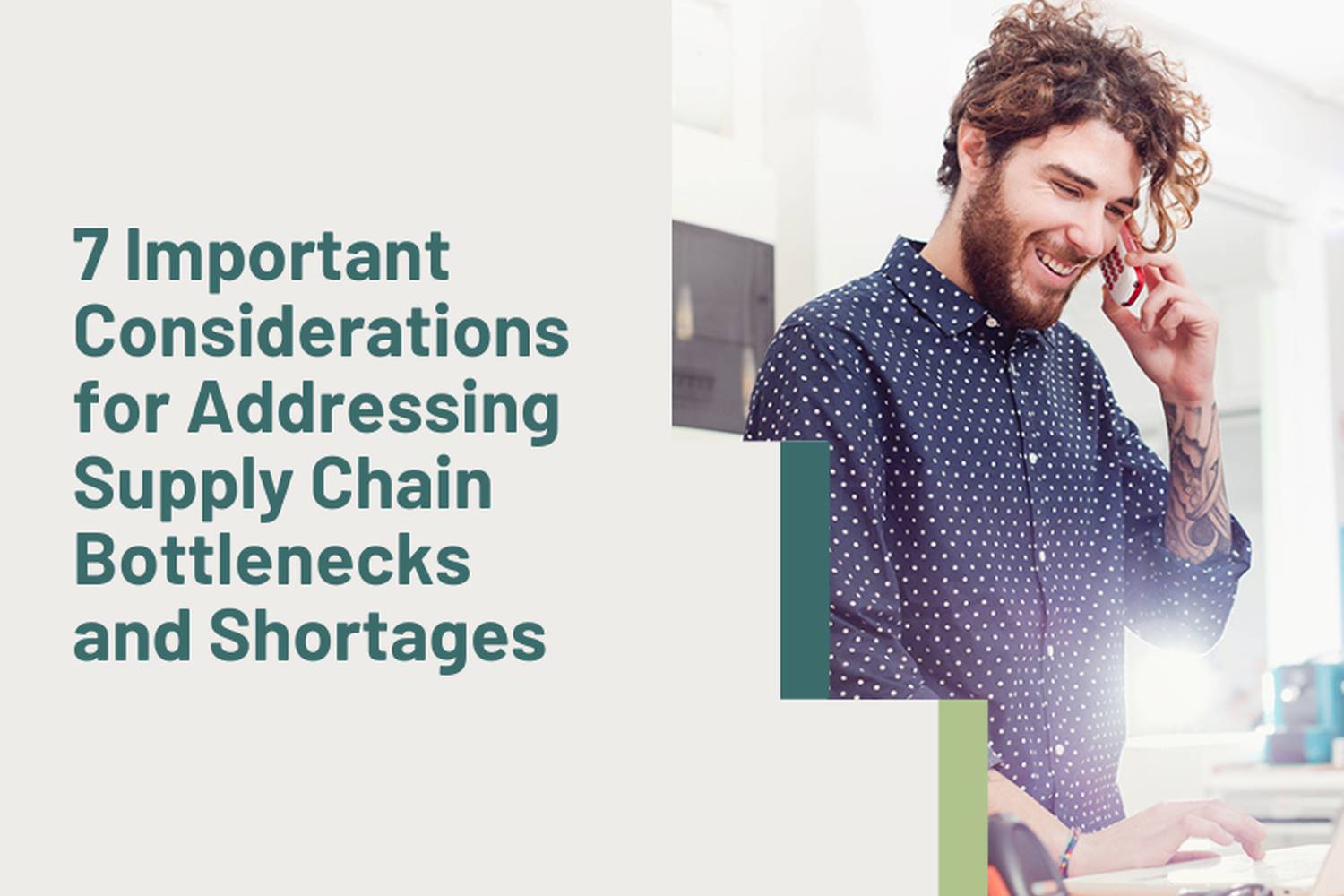This post was originally featured on ERM Insights by Carol.
To anyone paying attention, uncertainty is becoming more intense with each passing day it seems. And in this particular moment, supply chain woes and shortages are fueling much of this uncertainty.
One of the most ubiquitous results of the COVID-19 pandemic are the ongoing shortages caused by supply chain issues. Some of these shortages are for seemingly miniscule things we take for granted, but other shortages and supply chain bottlenecks are impacting larger scale industries like autos, medical devices, and more.
Take the auto market for example. Before leaving for our annual trip to the mountains, my car needed a new battery, so we trekked over to our local Honda dealer to get a replacement. However, when we arrived, we almost got the impression that the dealership was going out of business. A salesman told us that this long-standing dealership in our hometown usually has 400 new autos on the lot, but currently, the number ranges between 40 and 50.
You read that right – a mainstay dealership in Florida’s capital city only has 10% of its usual stock available on the lot. The same salesman told us that shortages for microchips and other materials have led to production delays. Another close contact whose firm supplies components to auto manufacturers is experiencing extensive delays in procuring raw materials.
It’s hard to pinpoint the exact reasons for these shortages, but it usually boils down to dramatic increases in demand, low supplies in raw materials, a shortage of workers, or a combination thereof. As Ryan Petersen, CEO of shipping software company Flexport, explains in this interview,
“Once one domino falls, it takes several with it and it can be difficult to predict where things will end up.”
Whatever the reasons for these current issues, this situation shows the importance of a complete evaluation of your company’s vendors. Any interruptions in this dynamic supply chain can have wide ranging impacts for your company including lost revenue, a damaged reputation, and disgruntled investors and customers.
Below are seven important considerations for avoiding supply chain breakdowns and shortages or mitigating their negative impacts.
Don’t just look at immediate vendors
Let’s consider the following situation involving one of my clients (in the manufacturing industry), who performs basic supply chain management.
This company relies on a vendor for a particular component to produce many of its devices. However, the vendor is having trouble obtaining materials from one of their suppliers, who cannot supply enough critical raw materials. Without the components, the company will be unable to manufacture a large majority of their products.
What this example shows is there are several layers to consider when it comes to your supply chain. Depending on the circumstances, it’s even possible to have 5th party suppliers.
Prioritize critical processes, components, and services
Depending on the size of your company and what you do, it’s possible (or even likely) that you could have hundreds of different vendors, especially when you factor in potential 4th and 5th parties. Unless your company leaders have given you unlimited funds and manpower, evaluating each and every one of these will be overwhelming.
Therefore, you have to prioritize where you spend your time and focus, and one way of doing this is to first look at the most critical processes, components, and services. Separate the ones that are handled 100% internally vs. ones where you rely on an outside party.
Be cautious though – just because something is handled internally doesn’t mean you can ignore it. If it’s critical enough, it won’t matter to your customers whether the breakdown happens within your doors or somewhere else.
It’s a two-way street
Remember a supply chain goes both ways, so it’s vitally important to understand the companies or organizations who rely on your products and services because you are part of their supply chain – it’s quite possible they’ll be asking you many of the same questions you should be asking your suppliers.
Diversify, diversify, diversify
Financial advisors counsel investors on the importance of diversification – if one particular investment goes down, theoretically you should be okay since the other investments pick up the slack. Much the same can be said for vendors. If a particular supplier is down because their facilities were damaged in a hurricane or a large number of their workers became ill, having an alternative supplier that can pick up the slack will be tremendously helpful in avoiding any disruptions.
Use contract language to protect your company
While it’s advisable to have alternate suppliers available, sometimes that isn’t possible or is impractical. Regardless, one way to protect your supply chain is to include language in your contract requiring third party suppliers to diversify their vendors. Even before the pandemic, many supply chain breakdowns and shortages occurred because a third-party vendor only had one supplier that suddenly went offline.
Another possibility is to require your supplier (or even fourth party supplier) to purchase a surety bond, which as explained here, is a legal document that requires the supplier to pay a retainer to a bond company to guarantee the fulfillment of a contract. Your company can further protect itself by requiring the supplier to purchase a third-party fidelity bond to compensate you in the event of intentionally wrongful acts, such as fraud, theft, or forgery. (Check with your company’s insurance broker/agent for recommendations for details.)
Vendor management is for everyone
Although the examples above are from manufacturers, don’t assume that these steps don’t apply to you just because you’re not this type of company. Every company, whether you provide a product or are a service-provider, relies on suppliers in some form or fashion to meet the needs of their customers. A breakdown in any supply chain can have disastrous consequences for any organization, so don’t ignore your vendors just because you’re not in manufacturing.
Don’t throw your hands up and say “this is how we’ve always done it”
One excuse I hear from companies when I ask why they do something a certain way is that this is how they’ve always done it. While traditions do have their place, it’s important for companies to be open to new ways of approaching problems. As we discuss often, the world is changing at a pace that will only continue to accelerate. Agility, be it with your suppliers, workforce, or strategy, will be the one common thread of successful companies in the years ahead.
As I’ve written in this example on what can happen with poor vendor risk management, breakdown in your supply chain can have disastrous ripple effects that can put your company’s success in jeopardy. If customers are unable to procure goods and services because of a supply chain breakdown, they’ll either lose interest or be forced to look elsewhere.
Taking steps outlined above not only helps your company avert failure but also positions your company for future success and new opportunities, especially over competitors or even vendors who are not taking steps to understand their supply chain.
To learn more about how NAVEX can help your company with third-party due diligence and monitoring







